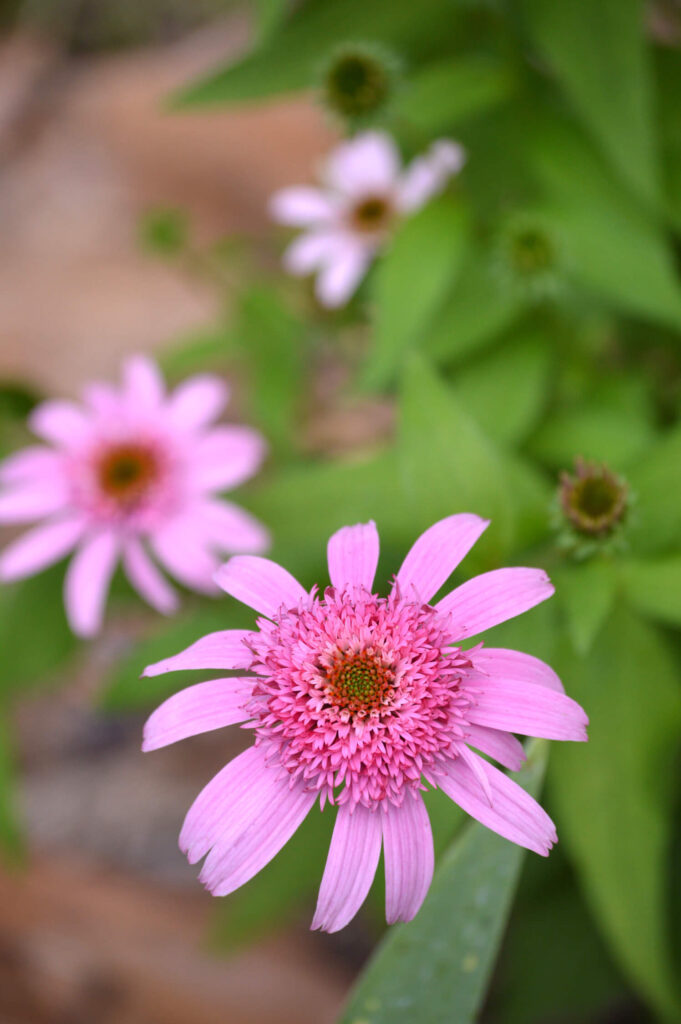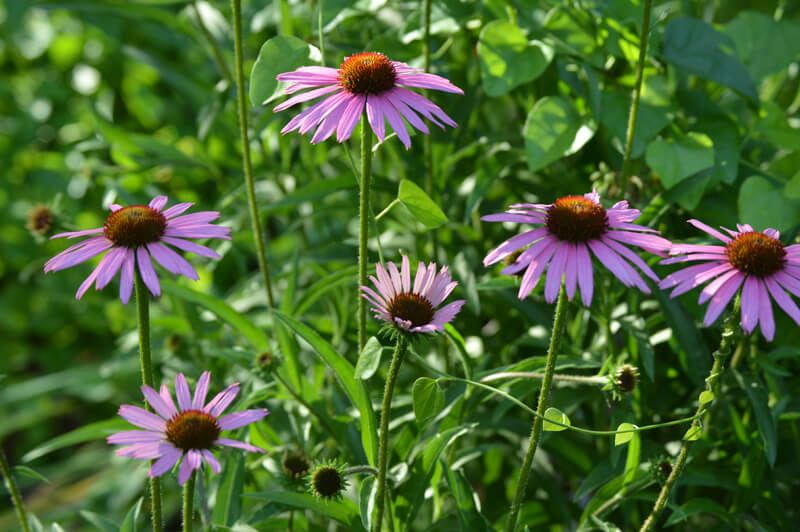Butterflies and bees love coneflowers in the genus Echinacea. You are probably familiar with purple coneflower (Echinacea purpurea), but many cultivars are now available in various colors: red, pink, white, orange, yellow, cream, green, and gold. There are even Echinacea flowers with double blooms.
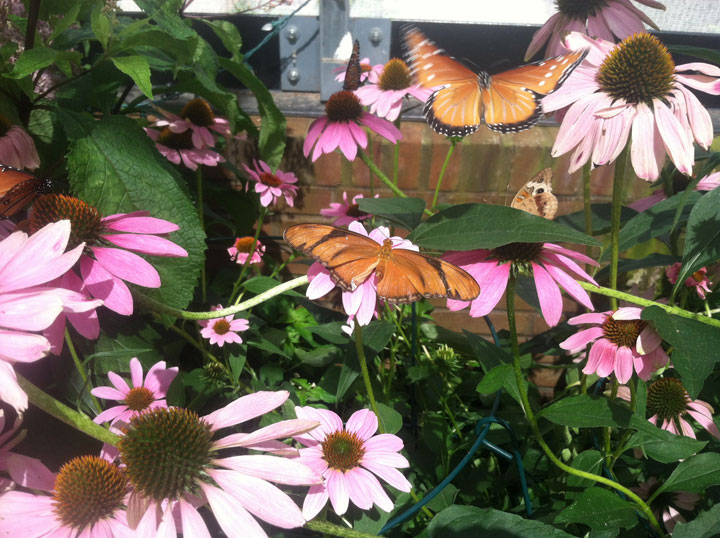
Natives vs Cultivars
Echinacea is native to the central and eastern United States and grows in prairies, fields, and even in open woods. The native plants produce pink, yellow, white, and purplish blooms. These have been crossed to make the many colored blooms available on the market today. Be aware that some of the cultivars will be sterile.
Composite Flower
The flower head is actually made up of multiple small florets in the center (multiple tiny flowers) with sterile rays that have color and attract insects. This cone-shaped center is where the plant gets its name.
The leaves of this plant are coarsely to finely hairy. E. tennesseensis has very rough hairs, for example, whereas E. purpurea leaves have softer hairs.
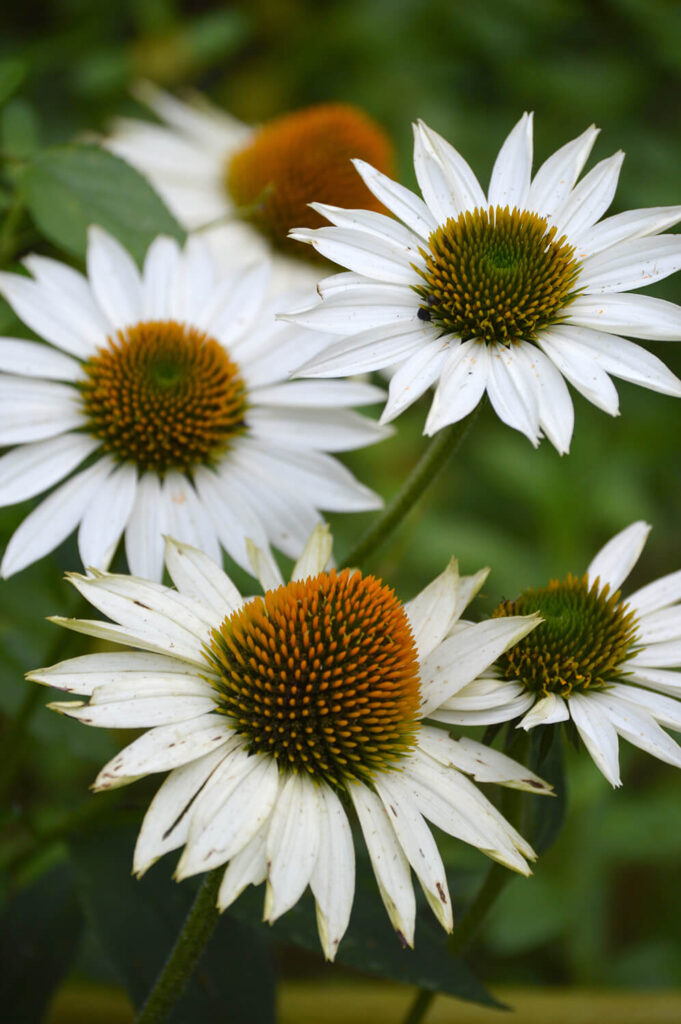
Echinacea Bloom Time
Echinacea flowers for a long period – from mid-summer to fall. To increase blooming time, you can deadhead. However, saving a few of the seedheads through fall will provide food for birds.
Summary of Echinacea characteristics:
- Perennial
- Long-flowering
- Hardy in USDA zones 3 – 9
- Spreads easily
- Easy-to-grow
- Heat-tolerant
- Drought-tolerant
- Deer-resistant
How to Grow Echinacea
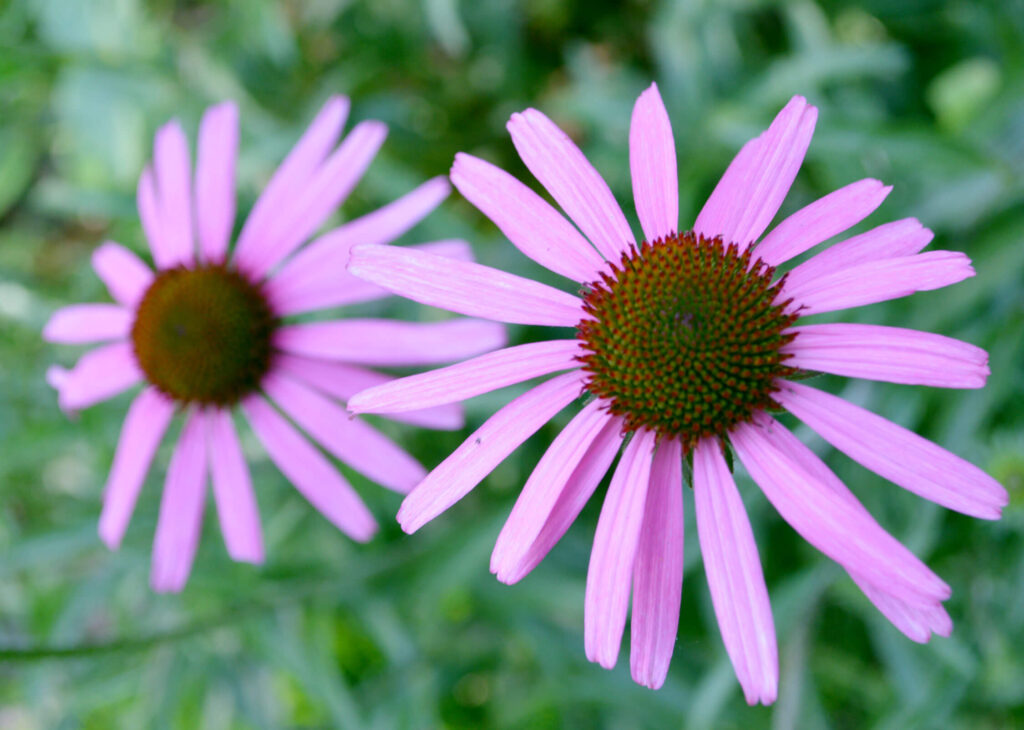
These are hardy, perennial flowering plants that require little maintenance and care. Plant them in full sun for best results in well-drained soil. While these plants are somewhat drought tolerant, they do best with regular water.
Echinacea plants spread quickly, so you may wish to divide the plants every 3-4 years. Divide the plants at the roots in the fall, and carefully dig deep enough to keep the taproot intact (E. purpurea has lateral roots).
Echinacea plants must have good soil drainage for best results, especially in the winter.
Growing Echinacea From Seed
While some gardeners advocate striation (a cold period) for the seeds, it is not necessary (according to the USDA); however, they mention that it may improve germination.
So, if you decide to collect seeds, wait until the flowers are completely dry to harvest them. You can sow them directly into the soil in the fall. They only require a tiny bit of soil sprinkled on the top.
If you grow the seeds indoors, soak the flower heads in water for an hour or two. Roll them in a paper towel to remove excess water, then place them in a plastic bag. Put the bag into the refrigerator and leave it there for two months before planting. Cover the seeds with about ¼ to 1/8 inch of soil when planting.

Wildlife Uses
Bees, butterflies and hummingbirds are attracted to the colorful flowers and feed on the nectar. Some of the butterfly species you might see feeding on the flowers include:
- Monarchs
- Eastern Tiger swallowtails
- Silver-spotted skippers
- Red admirals
- Pearl crescents
- Black swallowtails
Here is a link to a list of butterflies that use Echinacea: http://www.gardenswithwings.com/plant/Coneflowers/index.html
In the fall, the seeds are fed upon by birds, particularly finches.
I have read an article that argues that the new cultivars don’t provide as high a quality of food as the original E. purpurea (read the article here: http://www.beautifulwildlifegarden.com/planting-for-wildlife-dont-go-coneflower-crazy.html). So the author recommends planting both E. purpurea alongside other cultivars.
Some of the new cultivars are sterile – so they will be of no benefit to seed-eating birds in the fall.
My Favorites from My Garden
I enjoy both the original Echinacea purpurea and the hybrids. Mixing many colors and bloom types in one spot makes a bright splash of color.
In my garden, my favorites are E. tenneseensis and E. purpurea “Pink Double Delight.” Of course, I also really like the purple purple coneflower (E. purpurea).
